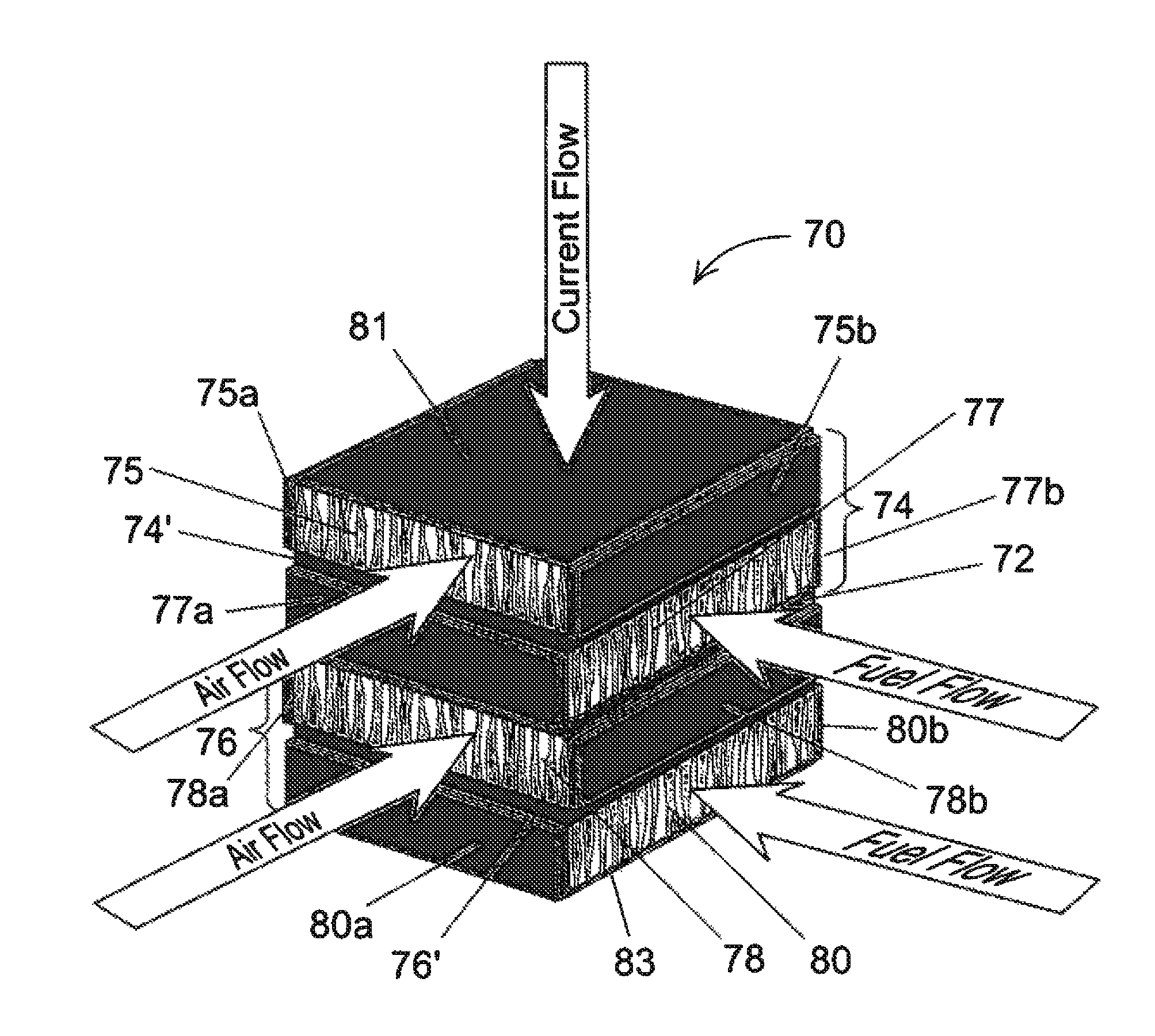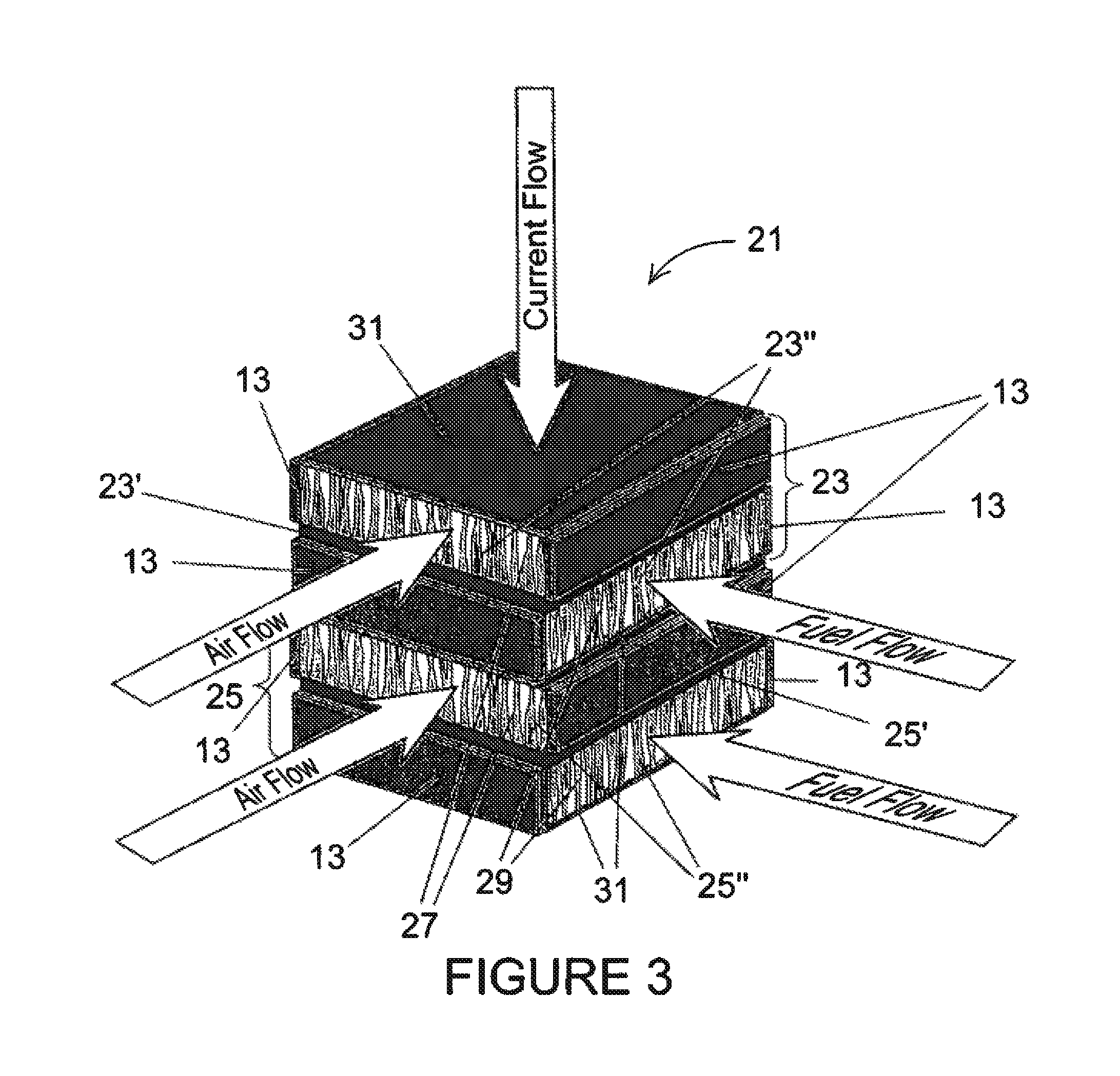Method for making a fuel cell
a fuel cell and fuel cell technology, applied in the manufacture of cell components, final product products, electrochemical generators, etc., can solve the problems of limiting the gas diffusion rate into the interior of the thick anode, limiting fuel utilization, and difficulty in providing adequate electrical contact between each cell and its metal
- Summary
- Abstract
- Description
- Claims
- Application Information
AI Technical Summary
Benefits of technology
Problems solved by technology
Method used
Image
Examples
second embodiment
A Second Embodiment
[0062]The inventors envision a second embodiment of their solid oxide fuel cell stack invention wherein the invention is modified as described below for the purpose of providing crew life support for NASA exploration missions including surface habitat and EVA suit implementation. More specifically, the present invention can be modified and optimized to perform electrolysis on the CO2 so as to produce breathable oxygen in CO2 rich settings, such as the surface of Mars.
[0063]Modification and optimization of the present invention would include the use of electrocatalysts tailored for electrolysis of CO2. The advantages would include low weight, durability, and high efficiency and specific power density.
[0064]The atmosphere on Mars, for example, is 95% CO2, making it an obvious source of O2. A single solid oxide fuel cell has successfully demonstrated the production of O2 from the electrolysis of CO2. The products of the electrolysis are pure O2 and CO and the power r...
third embodiment
A Third Embodiment
[0065]The inventors envision a third embodiment of their solid oxide fuel cell stack invention wherein the invention is modified as described below for the purpose of providing crew life support for NASA exploration missions including surface habitat and EVA suit implementation. More specifically, the present invention can be modified and optimized to perform electrolysis on the H2O present in the astronaut suits so as to produce breathable oxygen. Said fuel cells is also reversible and able to generate power from the stored H2 and O2 are used as fuel.
[0066]Modification and optimization of the present invention would include the use of electrocatalysts tailored for electrolysis of H2O or CO2. The advantages would include low weight, durability, and high efficiency and specific power density.
[0067]Heretofore, only fuel cells having very thick YSZ electrolytes, on the order of 300 to 600 microns thick, have been demonstrated (see AIAA 2000-1068 “Update on the Oxygen ...
PUM
| Property | Measurement | Unit |
|---|---|---|
| thickness | aaaaa | aaaaa |
| thickness | aaaaa | aaaaa |
| thick | aaaaa | aaaaa |
Abstract
Description
Claims
Application Information
 Login to View More
Login to View More - R&D
- Intellectual Property
- Life Sciences
- Materials
- Tech Scout
- Unparalleled Data Quality
- Higher Quality Content
- 60% Fewer Hallucinations
Browse by: Latest US Patents, China's latest patents, Technical Efficacy Thesaurus, Application Domain, Technology Topic, Popular Technical Reports.
© 2025 PatSnap. All rights reserved.Legal|Privacy policy|Modern Slavery Act Transparency Statement|Sitemap|About US| Contact US: help@patsnap.com



